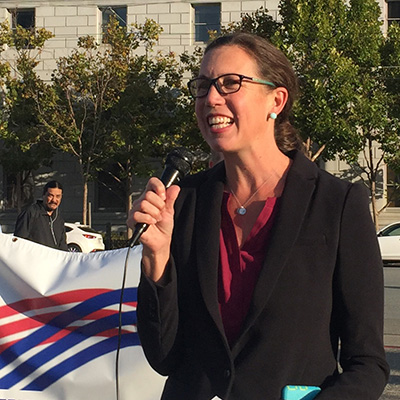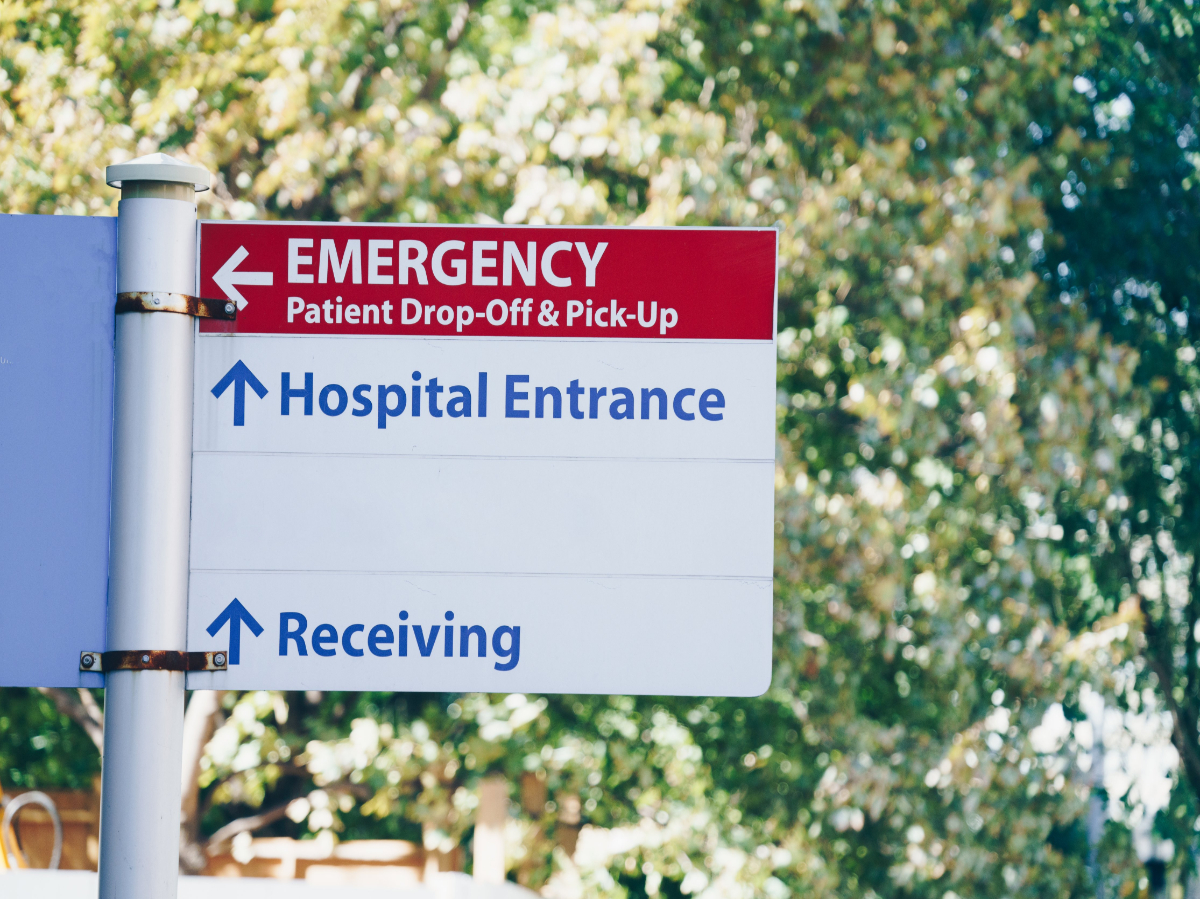
How to protect yourself from surprise medical bills
Tips from CALPIRG Education Fund and Health Access California

For a downloadable version of this tip sheet, click here.
Imagine you go to a hospital for a routine procedure. You’ve made sure your hospital and doctor are covered by your insurance. The procedure goes well and you head home to recover. Two weeks later, you get the bill, but instead of the copay you expected, you get a bill for nearly $4,000. Turns out, the anesthesiologist who assisted with your procedure was “out of network” and your insurance won’t cover that bill as expected. You’ve received a surprise medical bill and now owe the difference between what your insurance will pay the out-of-network anesthesiologist and what you were billed.
What is a “surprise medical bill?
You receive a surprise medical bill when, through no fault of your own, you are treated by providers outside of your insurance network. These “out-of-network” providers can charge exorbitant rates only revealed when the surprise bill arrives. The average emergency room surprise bill is around $600, but these bills can range into the tens or even hundreds of thousands of dollars. When out-of-network providers charge these high rates, it drives up costs for everyone. Consumers are burdened with higher bills that they had no way of avoiding. And when insurers have to pay their share of this higher charge, they’re likely to pass on that cost to everyone by raising premiums.
Know your rights
In California, some patients are protected from certain surprise medical bills. It is important to know your rights to protect yourself from these illegal out-of-network charges. If you have insurance through Medicare, Medi-Cal or are on Veterans Affairs Health Care, you are fully protected from surprise bills. This tip sheet is for people covered under any other type of insurance.
If your insurance plan is regulated by California state law, you are protected from surprise bills in two situations.
-
Treatment by out-of-network providers at in-network facilities without your written consent
-
Transportation by out-of-network air ambulances (helicopters or airplanes)
In these situations, you cannot be charged for anything more than what you would normally owe for in-network treatment. The out-of-network provider should not send you a bill. If you do receive one, you should not pay it. Instead, follow the steps below on “How to fight a surprise medical bill,” and inform your insurer at once.
Additional protections for certain patients who receive emergency care at an out-of-network facility.
In California, state-regulated plans are either regulated by the Department of Managed Health Care (DMHC) or the California Department of Insurance (CDI). Most Californians have coverage regulated by the DMHC. Only patients who have insurance regulated through DMHC are protected from surprise medical bills for emergency care. You can call the Department of Insurance Help Center at 1-800-927-4357 to find out which Department regulates your insurance plan. You can also call your insurer.
Exceptions to surprise billing protections
California’s consumer protections against surprise medical bills do not apply to all patients and all situations.There are some exceptions. You could be required to pay an out-of-network bill in the following situations:
-
If you signed a consent form more than 24 hours before care and were given a written estimate of the amount the provider will bill you.
-
If your insurance plan is not a “state-regulated” plan:
-
California’s surprise billing protections only apply to insurance plans regulated by the state. If you are unsure whether your plan is state-regulated, you can call the Department of Insurance Help Center at 1-800-927-4357. You can also call your insurer.
-
If you are transported in a ground ambulance that is not covered by your insurer. Any ground ambulance transport could result in a surprise bill.
If your bill fits into one of these exceptions, you can still try to lower the amount you owe. See below “Tips for lowering your medical bill.”
How to prevent a surprise bill
Because California law does not protect everyone and every situation, there are a few steps you should take to prevent a surprise bill.
-
Check with your insurer to make sure you are choosing a provider that is covered by your insurance. Make sure that the hospital or health care facility (lab, diagnostic center, surgery center) is in your insurance network before receiving treatment.
-
When planning hospitalizations at an in-network facility, check with the facility to ensure that all providers (surgeons, anesthesiologists, and others), lab services (such as blood work) and imaging services (such as X-rays and MRIs) are covered by your insurance plan. Be specific in requesting that all services you may need are covered by your insurer.
-
Know where your nearest in-network emergency room is for those times when it is possible to choose.
Choosing an out-of-network provider
Most insured Californians are covered by an HMO plan which does not cover out-of-network services. If you do have a plan that has an out-of-network benefit, you can still choose an out-of-network provider. However, actively choosing an out-of-network provider will result in a higher copay and additional costs your insurer will not cover.
If you want to use an out-of-network provider, California law requires the following:
-
You must give written consent to your provider at least 24 hours before treatment, and before admission to the facility.
-
The out-of-network provider must include a written estimate of what you will owe, as well as inform you that there is an in-network provider available at a lower-cost.
-
The consent form should be offered in multiple languages as required by California law.
NOTE: You should only sign a consent form if you are purposely choosing an out-of-network provider and are willing to pay the higher costs. You should not sign a consent form if you want to stay within your insurance network and avoid higher costs.
How to fight a surprise medical bill
-
Make sure you are looking at an actual bill or invoice. An “Explanation of Benefits” is not a bill.
-
If the bill looks incorrect, do not pay it. Sometimes bills are sent before the insurance company has made its portion of the payment. Call your insurer and ask for more information.
-
If you think you have received a surprise medical bill, you can use your rights to fight the charges. But first, be sure it is a bill covered by the consumer protections. Here are a few questions to ask. If you are able to answer yes to all these questions, then it is a surprise bill that could be protected by California law:
-
Is your insurance plan a state-regulated plan? If you are unsure, you can call the Department of Insurance Help Center at 1-800-927-4357.
-
Is the bill for more than your typical copay for in-network services?
-
If the bill is for an ambulance service, was it for an air ambulance (helicopter or plane)?
-
Is the bill for treatment at an in-network facility?
-
Is the bill for emergency treatment at an out-of-network facility and is your insurance plan regulated by the Department of Managed Health Care?
-
If you think you’ve been sent a bill you should not have to pay, file a complaint with your insurer. Then file a complaint with the Department of Managed Health Care either online or at 1-888-466-2219.
-
If you have already paid the bill that you do not owe, the provider is required to send you a refund within 30 days. Notify the provider that you want a refund and tell your insurer.
If your bill does not meet all the requirements above, you may still be able to lower the amount you owe. See the section below “Tips for lowering a medical bill.
NOTE: If you purposely chose a provider who is not covered by your insurer, and you signed a consent form allowing out-of-network treatment, you may have waived your surprise billing rights. Check the consent form to make sure it meets the requirements in the section above “Choosing an out-of-network provider.”
Tips for lowering a medical bill
-
Ask for an itemized bill and check that you are not being mistakenly billed for treatment you did not receive.
-
Compare the itemized bill to your Explanation of Benefits to see whether your insurer is paying its share. Sometimes patients are billed because their provider sent the wrong billing code to the insurer.
-
Contact your provider and ask about anything you don’t understand.
-
Contact your insurer to see if any mistakes were made on their end.
-
If there are no mistakes, try negotiating with your provider. Many hospitals have patient advocate departments to help you negotiate the bill.
-
While you negotiate, ask the provider to hold off sending the bill to collections and make sure that they follow these requirements:
-
Providers can only send a bill to collections for the amount you would owe for in-network treatment.
-
Providers cannot send the bill to collections or sue you until 150 days after the first bill.
-
Bill collectors cannot collect an unpaid bill by garnishing your wages or placing a lien on your primary residence.
-
Contact the Department of Managed Health Care online or at 1-888-466-2219. They may be able to help you fight the bill.
-
Keep careful notes of all conversations you have. Get the names of anyone you speak to. Keep your files in one place for easy access.
-
Be patient and clear in your requests.
Special information during the COVID-19 pandemic
Testing for COVID-19 is free of charge for both insured and uninsured consumers if it is medically necessary. This means that if you have symptoms or have been exposed to someone with COVID-19, you can get a free test. If you are an essential worker as defined by California, you can also get tested at no cost. Even though the test is free, many people have been billed for other fees associated with their visit. In California, state-regulated insurers cover the entire cost of medically necessary testing. But if you are in a federally regulated plan, you may still be responsible for a copay or deductible. Before being tested, contact your insurer to confirm you are using an in-network testing site and ask about cost-sharing. When you choose a testing site, call the site and ask about other fees they may charge you.
In California, you can also be tested at CVS, Walgreens, eTrueNorth, Health Mart, and Rite Aid at no cost. You do not need a referral to be tested at these pharmacies, but you will have to complete a questionnaire to determine that your test is medically necessary. To find out more about COVID-19 testing in your state, use this resource.
More consumer protections are coming in January 2022
In a victory for consumers, Congress passed the No Surprises Act to expand surprise billing protections to all insured Americans. This means that the millions of Californians on federally regulated plans who are currently without protections will no longer receive most surprise bills beginning in January 2022. The federal protections will closely mirror California’s laws, protecting patients from surprise out-of-network bills for emergency treatment, non-emergency treatment at in-network hospitals, and transportation by air ambulance.
Last updated February 10th, 2021.
Topics
Authors
Emily Rusch
Vice President and Senior Director of State Offices, The Public Interest Network
Emily is the senior director for state organizations for The Public Interest Network. She works nationwide with the state group directors for PIRG and Environment America to help them build stronger organizations and achieve greater success. Emily was the executive director for CALPIRG from 2009-2021, overseeing a myriad of CALPIRG campaigns to protect public health, protect consumers in the marketplace, and promote a robust democracy. Emily works in our Oakland, California, office, and loves camping, hiking, gardening and cooking with her family.
Find Out More

Safe At Home in 2024?

What the California Consumer Privacy Act means for you

5 steps you can take to protect your privacy now
